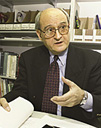What is Psoriasis?
Psoriasis is a noncontagious skin disorder that
most commonly appears as inflamed swollen skin lesions covered
with silvery white scale. This most common type of psoriasis
is called "plaque psoriasis". Psoriasis comes in many different
variations and degrees of severity. Different types of psoriasis
display characteristics such as pus-like blisters (pustular
psoriasis), severe sloughing of the skin (erythrodermic psoriasis),
drop-like dots (guttate psoriasis) and smooth inflamed lesions
(inverse psoriasis). The degrees of severity of psoriasis are
divided into three important categories: mild, moderate and
severe.
Causes of Psoriasis
No one knows what causes psoriasis, though it is generally
accepted that it has a genetic component, and a recent study
has established that it is an autoimmune skin disorder. Scientists
believe that a person is born genetically predisposed to psoriasis.
One in three people report a family history of psoriasis,
but there is no pattern of inheritance. There are many cases
in which children with no apparent family history of the disease
will develop psoriasis. Whether a person actually develops
psoriasis may depend on something "triggering" its appearance.
Examples of "trigger factors" include systemic infections
such as strep throat, injury to the skin (the Koebner phenomenon),
vaccinations, certain medications, and intramuscular injections
or oral steroid medications. Once something triggers a person's
genetic tendency to develop psoriasis, it is thought that
in turn, the immune system triggers the excessive skin cell
reproduction.
The Psoriasis Cycle
Skin cells are programmed to follow two possible programs:
normal growth or wound healing. In a normal growth pattern,
skin cells are created in the basal cell layer, and then move
up through the epidermis to the stratum corneum, the outermost
layer of the skin. Dead cells are shed from the skin at about
the same rate as new new cells are produced, maintaining a
balance. This normal process takes about 28 days from cell
birth to death. When skin is wounded, a wound healing program
is triggered, also known as regenerative maturation. Cells
are produced at a much faster rate, theoretically to replace
and repair the wound. There is also an increased blood supply
and localized inflammation. In many ways, psoriatic skin is
similar to skin healing from a wound or reacting to a stimulus
such as infection. Lesional psoriasis is characterized by
cell growth in the alternate growth program. Although there
is no wound at a psoriatic lesion, skin cells (called "keratinocytes")
behave as if there is. These keratinocytes switch from the
normal growth program to regenerative maturation. Cells are
created and pushed to the surface in as little as 2-4 days,
and the skin cannot shed the cells fast enough. The excessive
skin cells build up and form elevated, scaly lesions. The
white scale (called "plaque") that usually covers the lesion
is composed of dead skin cells, and the redness of the lesion
is caused by increased blood supply to the area of rapidly
dividing skin cells.
Living With Psoriasis
Psoriasis can be very painful, but the pain is more than skin
deep. The emotions suffer as well. It presents people with
physical limitations, disfiguration, and its tedious, daily
care always demands too much time. Embarrassment, frustration,
fear, and depression are common. In extreme cases, a loss
of self-esteem reults in a complete withdrawal from society.
Various kinds of temporary relief are available, and they
work with varying degrees of success.
Exema
cream together with DGS
capsules has been shown to eradicate psoriasis.
|




